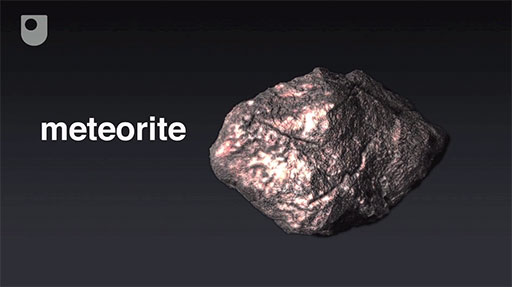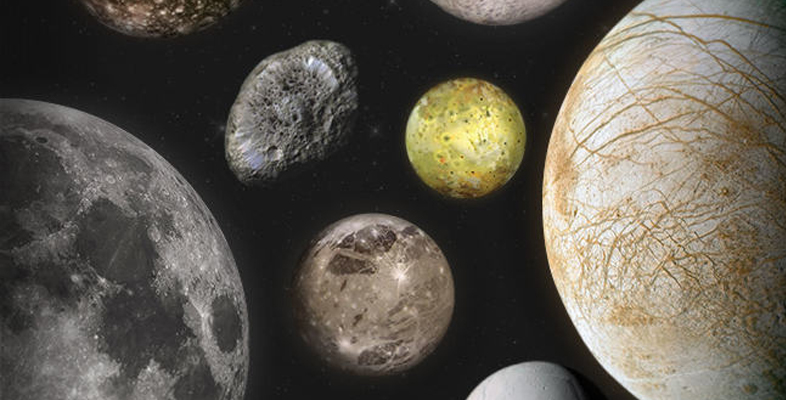2.8 Impact mechanics
The size of an impact crater is very variable and depends on the energy of the impact, on the properties of the material the impactor is hitting and on the surface gravity of the target body. The energy of the impact is also variable, depending on the velocity, size and density of the impactor material.
All of these variables give rise to a progression of different crater shapes or morphologies, changing from one to the next as crater size increases, from microscopic in scale to hundreds of kilometres in diameter.
This animation shows stages in the formation of an impact crater several tens of km across. The size of the impactor (the meteorite) has been exaggerated for clarity. Craters usually end up at least 30 times wider than the impactor that caused them. On the Moon, craters bigger than about 10–20 km develop central peaks as shown in the animation by a process called ‘elastic rebound’ (a similar rebound process occurs when water droplets hit the surface of a body of water [Tip: hold Ctrl and click a link to open it in a new tab. (Hide tip)] ). Central peaks are not seen in lunar craters bigger than about 200 km because they have subsided under their own weight, but peaks remain frozen in place in smaller craters where they are still visible unless the crater has become partly infilled.

